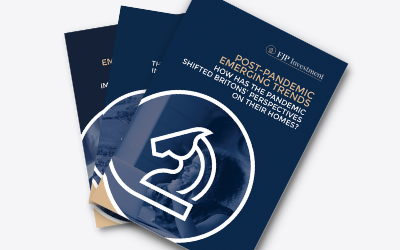How Landlords Can Maximise Returns
As a landlord, one of your primary goals is to maximise the return on your investment. While the property market in the UK can be volatile, with the right strategies, landlords can significantly boost their rental yields. But how exactly can you ensure that your property works as hard for you as possible? In this guide, we’ll explore some of the most effective ways to enhance your rental yields, whether you’re managing a single property or a large portfolio.
Understanding Rental Yield: Gross vs Net
Rental yield is a simple yet essential metric for any landlord, providing insight into how much profit your property generates. Gross rental yield gives a general sense of profitability by calculating annual rental income divided by the property’s value. While this offers a broad picture, net rental yield is more informative. This accounts for running costs such as maintenance, insurance, mortgage payments, and management fees, giving you a clearer view of your actual returns.
For instance, gross rental yield can be calculated as follows:
- Multiply monthly rent by 12 (to get the annual income).
- Divide this annual figure by the property purchase price.
- Multiply by 100 to get the percentage.
However, the net yield considers additional factors like agency fees and property taxes, painting a more accurate picture of profitability. According to Paragon, landlords with larger portfolios often see higher average yields, with some generating returns above 7%.
Strategic Renovations: Focus on Value-Adding Improvements
Making the right improvements to your property can significantly increase your rental income. However, not all renovations offer the same return on investment. To maximise rental yield, focus on strategic upgrades that provide tangible benefits to tenants, such as adding an extra bedroom or updating kitchens and bathrooms
Adding energy-efficient upgrades can also appeal to environmentally conscious tenants and reduce overall utility costs, making your property more desirable
Jamie Johnson, CEO of FJP Investment, highlights the importance of eco-friendly improvements: “Landlords who invest in sustainable features not only reduce maintenance costs but also attract tenants willing to pay a premium for energy-efficient homes.” Simple updates like double-glazed windows or smart thermostats can enhance tenant satisfaction and improve long-term profitability.
Adjusting Rent to Match Market Trends
Rent pricing is a delicate balancing act. Set it too high, and you may struggle to find tenants. Set it too low, and you risk leaving money on the table. Regularly reviewing and adjusting your rent based on market conditions is key to optimising rental income.
“One of the simplest ways to boost yield is to keep rent aligned with the market,” says Johnson. Monitoring local property values, nearby rent prices, and supply-demand dynamics can help you stay competitive while maximising profitability
Sometimes, even a small rent increase can make a significant difference over time, provided it is justified by property improvements or market conditions.
If your rent is well below the market average, increasing it incrementally might also help bridge the gap. But be cautious — a rent hike should always reflect the property’s condition and local market trends to avoid vacancies
Reducing Vacancies and Tenant Turnover
Void periods, where your property sits empty, can significantly impact your rental yield. One way to combat this is by focusing on tenant retention. Long-term tenants provide a reliable income stream and reduce the costs associated with turnover, such as advertising, cleaning, and repairs
Offer incentives for longer leases or build strong relationships with tenants by responding quickly to maintenance requests and ensuring the property is well-maintained. Flexibility, such as allowing minor personalisation or being pet-friendly, can also enhance tenant satisfaction and retention
Another effective way to reduce vacancy rates is to market your property more proactively. Advertise well in advance of the current tenant moving out and keep your property in top condition for viewings.

Smart Property Management: Hands-on vs Outsourcing
For landlords with multiple properties, or for those who don’t have the time to handle day-to-day management, hiring a property manager can be an excellent solution. Professional property management can help streamline operations, reduce vacancy rates, and ensure that rent is collected on time. However, outsourcing can also come with additional costs, which will impact your net rental yield.
If you have a smaller portfolio or the time to manage your property yourself, you can save on these costs. Taking a hands-on approach to maintenance, tenant communications, and even marketing can significantly reduce expenses. That said, managing multiple properties can become time-consuming, so consider your long-term strategy and lifestyle before committing to either approach
Location, Location, Location: Targeting the Right Tenants
The old adage that “location is everything” rings especially true in the rental market. Properties in prime locations near schools, transport links, and employment hubs tend to generate higher rental yields. That said, don’t overlook emerging areas where property prices are still reasonable but rental demand is rising
Landlords who target specific tenant demographics, such as young professionals, students, or families, can adjust their properties accordingly. For instance, adding extra storage space or converting rooms into home offices can appeal to tenants who work remotely. Properties with proximity to parks, shopping centres, and leisure facilities also tend to command higher rents.
Short-term lets, such as holiday rentals, can provide much higher returns than long-term tenants, especially in tourist-heavy locations. However, these come with their own set of challenges, such as higher management costs and frequent vacancies during off-peak seasons
Tax Efficiency: Maximising Deductions to Increase Yield
Tax efficiency is a key area often overlooked by landlords. By taking advantage of the various tax reliefs and allowances available, landlords can increase their net rental yield. Mortgage interest relief, deductions for repairs and maintenance, and capital allowances can all help reduce your tax liability
Working with a financial adviser or tax specialist to structure your property investments in the most tax-efficient way can help maximise profits over time. Ensure that you’re aware of all potential deductions, including insurance premiums, ground rent, and letting agency fees
Long-Term Strategies for Sustainable Growth
Maximising rental yield is an ongoing process that requires a combination of strategic investments, effective property management, and a keen understanding of market dynamics. Whether you’re adding value through smart renovations, adjusting rents to reflect market conditions, or focusing on tenant retention, every step you take towards improving your property’s appeal can lead to greater profitability.
In a fluctuating property market, it’s crucial to stay flexible and adapt your strategy over time. By making data-driven decisions and staying proactive in managing both costs and tenant relationships, landlords can ensure that their properties provide consistent, high returns for years to come. Ultimately, by focusing on long-term sustainability and growth, you can not only boost your rental yield but also enhance the overall value of your property portfolio.
ARE YOU READY TO START INVESTING?
Subscribe to our mailing list now for exclusive deals, investment guides and the latest information from the property market.







